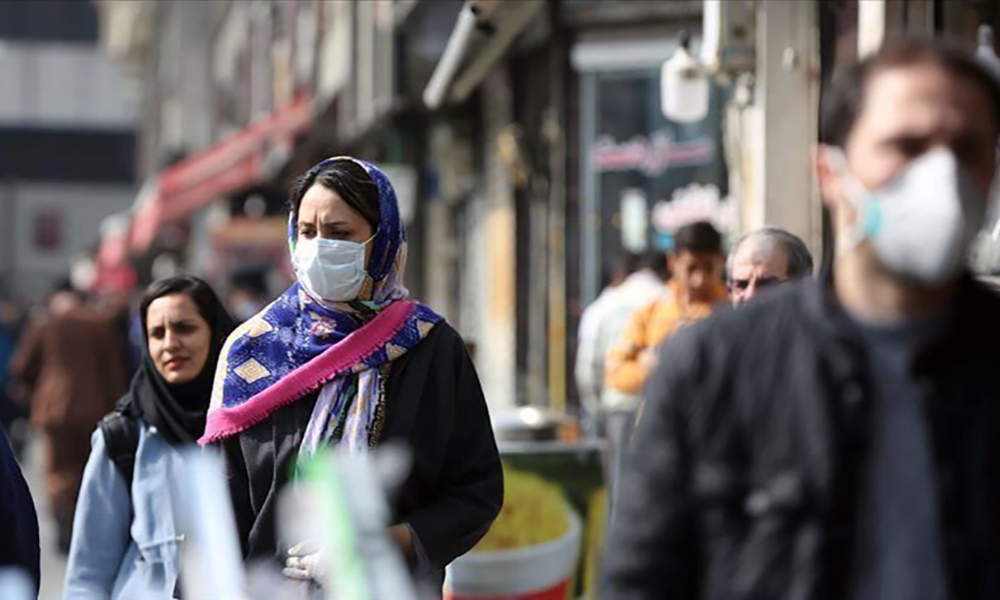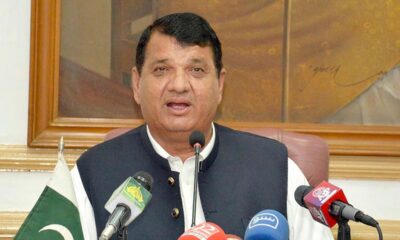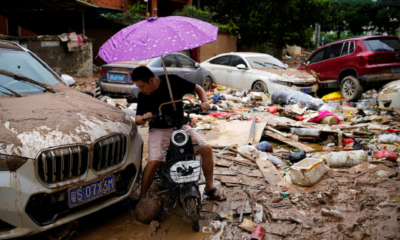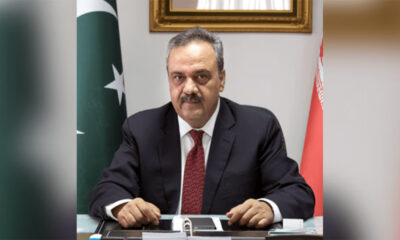COVID-19
South Asia crosses 30 million COVID-19 cases as India battles second wave

Coronavirus infections in the South Asia region surpassed 30 million on Friday, according to a Reuters tally of official data, led by India which is struggling with a second COVID-19 wave and a vaccine shortage across the region.
India, the second most-populous country in the world, this month recorded its highest COVID-19 death toll since the pandemic began last year, accounting for just over a third of the overall total.
The South Asia region – India, Bangladesh, Pakistan, Bhutan, Nepal, Maldives and Sri Lanka – accounts for 18% of global cases and almost 10% of deaths. But there is growing suspicion that official tallies of infections and deaths are not reflecting the true extent of the problem.
This month, India opened its coronavirus vaccination campaign to everyone aged 18 or older. However, it has not been able to meet vaccine demand despite being one of the biggest vaccine producers in the world.
India has been inoculating its people with the AstraZeneca (AZN.L) vaccine produced locally at the Serum Institute of India (SII), Covaxin made by local firm Bharat Biotech and has begun rolling out Russia’s Sputnik V.
Prime Minister Narendra Modi has faced mounting criticism for the failure to secure vaccines as only about 3% of India’s 1.3 billion population has been fully vaccinated, the lowest rate among the 10 countries with the most cases.
To meet domestic demand, India temporarily halted vaccine exports in March after donating or selling more than 66 million doses. The halt has left countries including Bangladesh, Nepal, Sri Lanka, and many in Africa scrambling for alternate supplies.
However, India is still facing a vaccine shortage and several of its state governments, and even cities such as Mumbai, have launched global tenders or sought expressions of interest from firms such as Pfizer (PFE.N), Moderna (MRNA.O) and Johnson and Johnson (JNJ.N) for urgent supplies.
India’s official tally of daily coronavirus infections has been falling in the past few days, offering hope that its second wave is ebbing.
But there are serious concerns that many new infections are not being reported, largely due to a dearth of testing in the countryside.
As of Friday, India has reported nearly 27.6 million cases and 318,895 deaths. (Graphic on global cases and deaths)
Since India is unlikely to resume major exports of COVID-19 vaccines until October, other South Asia countries such as Nepal and Bangladesh are making diplomatic efforts to secure COVID-19 vaccines to prop up their faltering inoculation drives as their stocks run out.
India’s western neighbour Pakistan, with purchases and donations from China and allocations from the World Health Organisation and the GAVI Vaccine Alliance, has now secured more than 18 million doses. On Wednesday, Pakistan opened its vaccination campaign to everyone aged 19 or older.
At least 219.17 million vaccine doses have been administered in southern Asia by Friday, according to figures from Our World in Data.
COVID-19
WHO declares end to COVID global health emergency

The World Health Organization said Friday that COVID-19 no longer qualifies as a global emergency, marking a symbolic end to the devastating coronavirus pandemic that triggered once-unthinkable lockdowns, upended economies and killed millions of people worldwide.
The announcement, made more than three years after WHO declared the coronavirus an international crisis, offers some relief, if not an ending, to a pandemic that stirred fear and suspicion, hand-wringing and finger-pointing across the globe, AP reported.
The U.N. health agency’s officials said that even though the emergency phase was over, the pandemic hasn’t finished, noting recent spikes in cases in Southeast Asia and the Middle East.
WHO says thousands of people are still dying from the virus every week, and millions of others are suffering from debilitating, long-term effects.
“It’s with great hope that I declare COVID-19 over as a global health emergency,” WHO Director-General Tedros Adhanom Ghebreyesus said.
“That does not mean COVID-19 is over as a global health threat,” he said, warning that new variants could yet emerge. Tedros noted that while the official COVID-19 death toll was 7 million, the real figure was estimated to be at least 20 million.
Tedros said the pandemic had been on a downward trend for more than a year, acknowledging that most countries have already returned to life before COVID-19.
He bemoaned the damage that COVID-19 had done to the global community, saying the pandemic had shattered businesses, exacerbated political divisions, led to the spread of misinformation and plunged millions into poverty.
When the U.N. health agency first declared the coronavirus to be an international crisis on Jan. 30, 2020, it hadn’t yet been named COVID-19 and there were no major outbreaks beyond China.
More than three years later, the virus has caused an estimated 764 million cases globally and about 5 billion people have received at least one dose of vaccine.
In the U.S., the public health emergency declaration made regarding COVID-19 is set to expire on May 11, when wide-ranging measures to support the pandemic response, including vaccine mandates, will end. Many other countries, including Germany, France and Britain, dropped most of their provisions against the pandemic last year.
When Tedros declared COVID-19 to be an emergency in 2020, he said his greatest fear was the virus’ potential to spread in countries with weak health systems.
Most recently, WHO has struggled to investigate the origins of the coronavirus, a challenging scientific endeavor that has also become politically fraught.
COVID-19
COVID-19 in Iran: Nearly 900 new cases, 24 deaths recorded

The Iranian health ministry announced on Sunday that more than 890 new cases of COVID-19 have been identified across the country during the past 24 hours, adding that 24 patients have died in the same period of time, Fars News Agency reported.
“A sum of 891 new patients infected with COVID-19 have been identified in the country based on confirmed diagnosis criteria during the past 24 hours,” the Iranian Health Ministry’s Public Relations Center said on Sunday, adding, “454 patients have been hospitalized during the same time span.”
The ministry’s public relations center said 611 people infected with COVID-19 are in critical condition.
COVID-19
China says 200 million treated, pandemic ‘decisively’ beaten

China says more than 200 million of its citizens have been diagnosed and treated for COVID-19 since it lifted strict containment measures beginning in November.
With 800,000 of the most critically ill patients having recovered, China has “decisively beaten” the pandemic, according to notes from a meeting of the ruling Communist Party’s all-powerful Politburo Standing Committee presided over by President and party leader Xi Jinping, AP reported.
China enforced some of the world’s most draconian lockdowns, quarantines and travel restrictions and still faces questions about the origins of the virus that was first detected in the central Chinese city of Wuhan in late 2019. Heavy-handed enforcement prompted rare anti-government protests and took a heavy toll on the world’s second-largest economy.
The official Xinhua News Agency quoted Xi as saying that policies to control the outbreak had been “entirely correct.” The abrupt lifting in November and December of the “zero COVID” policy that had sought to eliminate all cases of the virus led to a surge in infections that temporarily overwhelmed hospitals.
Case numbers have since peaked and life has largely returned to normal, although international travel in and out of China has yet to return to pre-pandemic levels.
China is now transitioning to a post-pandemic stage after a fight against the outbreak that was “extraordinary in the extreme,” Xinhua said.
The government will continue to “optimize and adjust prevention and control policies and measures according to the times and situations with a strong historical responsibility and strong strategic determination,” Xinhua said.
-

 Latest News5 days ago
Latest News5 days agoPakistan’s frontiers minister stresses ‘dignified’ return of Afghan refugees
-

 Latest News3 days ago
Latest News3 days agoRashid Khan named AWCC’s brand ambassador
-

 Regional4 days ago
Regional4 days agoIranian president lands in Pakistan for three-day visit to mend ties
-

 Climate Change5 days ago
Climate Change5 days agoMassive river flooding expected in China, threatening millions
-

 World5 days ago
World5 days agoTwo Japan navy helicopters crash, one body found, 7 missing
-

 Sport4 days ago
Sport4 days agoKolkata beat Bengaluru by one run in IPL as Kohli fumes at dismissal
-

 Sport4 days ago
Sport4 days agoACL: Aino Mina 3-0 Istiqlal Kabul; Attack Energy 3-0 Khadim
-

 Climate Change4 days ago
Climate Change4 days agoRescuers race to reach those trapped by floods in China’s Guangdong
























